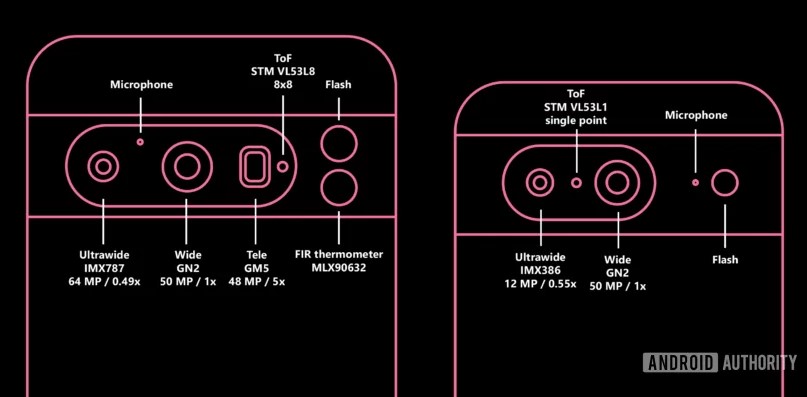There are rumors that the Google Pixel 8 and 8 Pro might significantly improve the primary sensor. Google usually doesn’t play the hardware game with their phones. They rely on software and image processing to get the best possible results.
The Sony IMX 362 sensor, which Google first used on the Pixel 2, was used until the Google Pixel 5. The IMX 363 was a minor update, and the sensor size was the same. For three years, Google optimized the sensor, developed software around it, and squeezed the most possible out of that hardware.
The affordable Pixel, A series of phones, got the same 12MP 1/2.55″ IMX 363 sensor, too, right up until the new Pixel 7A. However, Google has been rapidly changing direction in recent times. Their processing remains top-notch, but they aim to compete on a hardware level. Their recent releases reflect this.
In 2021, Google released the Pixel 6 and 6 Pro, which were incredible value-for-money phones with Google’s software and excellent camera processing algorithms with their AI. The Pixel 6 no longer relied on heavy processing with the IMX 363 but got a new 50MP 1/1.31″ Samsung GN1 sensor.
Just moving to a new sensor helped Google gain a lot of advantages, especially with zoom flexibility. With the Pixel 7, there was a new lossless zoom mechanism. This is close to what an actual 2X lens can produce, though it still isn’t an excellent output since it’s cropping into the primary sensor. Regardless, good photos at this focal length wouldn’t have been if they had used the older tiny IMX 363 sensor.
The recent Pixel 7A also has a new relatively large IMX 787 sensor, which is a 64MP 1/1.73″ sensor. With Google upgrading its camera hardware, there are new rumors that the Google Pixel 8 and Pixel 8 Pro will use the Samsung GN2 sensor. This is a significant upgrade in sensor size.
The GN1 isn’t a new sensor; we’ve seen it on the Xiaomi Mi 11 Ultra in 2021. Xiaomi didn’t harness the full power of this sensor, but it was known for its incredible depth of field, stellar details, low noise, and excellent low-light photos. But since it’s Google with the already fantastic software this time, they’ll mostly use it better.
The Samsung GN2 is a massive 50MP 1/1.12″ sensor close to 1″ and is primarily identical to the Sony IMX 989 overall. The performance depends on how well Google refines the processing. There were several with the Pixel 6 series, mostly about overprocessing, too much software HDR, and aggressive noise reduction.
New details emerge about Pixel 8 series cameras.
There are more camera upgrades to the Pixel 8 Pro. Remember that 64MP IMX 787 sensor on the Pixel 7A? Google uses this as the ultra-wide on the Pixel 8 Pro. We’ll also get a 48MP 5X GM5 periscope telephoto as the third camera. There’s also a time-of-flight sensor (VL53L8) and a new FIR thermometer for temperature sensing.
The Pixel 8 Pro (and maybe the 8) might get an adaptive flash. This dynamically adjusts the flash’s brightness depending on the ambient light. We’ve seen this before on the iPhone 14 Pro. The adaptive torch does help with night photos.

In conclusion, the camera of the Pixel 8 could look like a 50MP GN2 (main)+ IMX 386 (ultra-wide)+ VL53L1 (TOF) sensor. And for the Pixel 8 Pro, we’re probably looking at 50MP GN2 (main)+ 64MP IMX 787 (ultra-wide)+ 48MP GM5 (5X periscope telephoto)+ VL53L8 (TOF).
The thermometer will likely use the MLX90632 sensor. The front camera on both these phones is mostly the same 1/2.65″ 10.8MP Samsung 3J1 sensor.
Featured Image Credit: Onleaks/SmartPrix